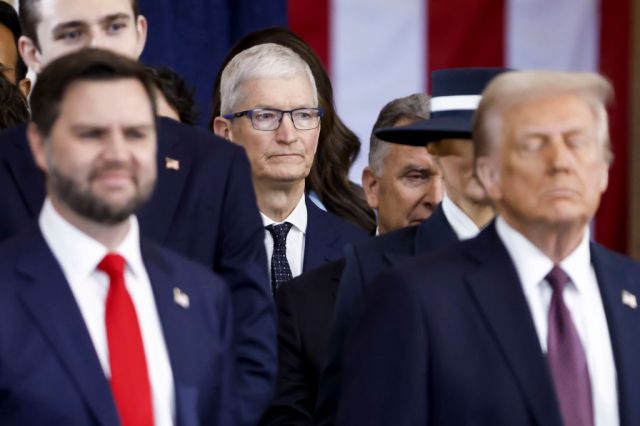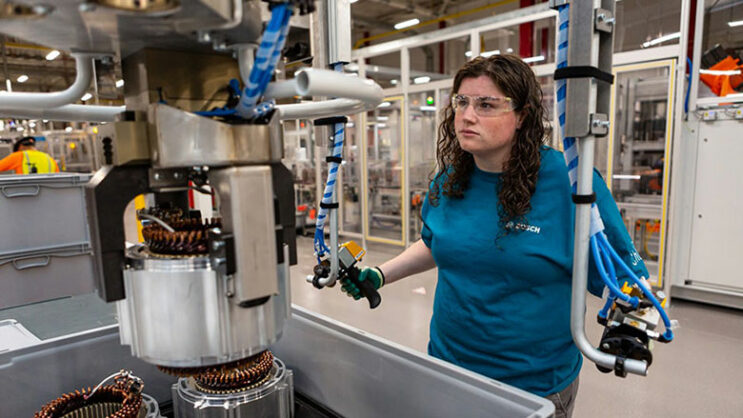From Slums to Stocks: How Shankar Sharma Reveals India's Manufacturing Conundrum with China
Manufacturing
2025-04-13 12:52:00Content

In a revealing social media post, veteran investor Shankar Sharma has inadvertently highlighted a critical challenge facing India's manufacturing aspirations. His recent commentary about a gym equipment workshop nestled in a Mumbai slum has ignited a broader national dialogue about India's persistent reliance on Chinese manufacturing components.
Despite ambitious dreams of emerging as a global manufacturing powerhouse, India finds itself at a crossroads. The country's industrial transformation is being systematically hindered by two significant obstacles: a heavy dependence on imported parts and bureaucratic land-use regulations that strangle entrepreneurial potential.
As global supply chains seek alternatives to China, industry experts argue that India requires more than protectionist measures like tariffs and government subsidies. The real key to success lies in comprehensive structural reforms that can genuinely enable large-scale, competitive manufacturing.
The gym equipment workshop serves as a microcosm of India's larger industrial challenges—a potent symbol of potential innovation constrained by systemic limitations. For India to truly realize its manufacturing ambitions, it must address these fundamental structural barriers with bold, forward-thinking policies.
Manufacturing Crossroads: India's Industrial Transformation Challenges Unveiled
In the dynamic landscape of global manufacturing, India stands at a critical juncture, wrestling with complex challenges that threaten its aspirations to become a global production powerhouse. The intricate interplay of economic policies, technological limitations, and structural constraints presents a nuanced narrative of potential and impediment.Breaking Barriers: The Untold Story of India's Industrial Ambition
The Manufacturing Ecosystem: Navigating Systemic Constraints
India's manufacturing sector confronts multifaceted challenges that extend far beyond simple economic calculations. The current infrastructure reveals deep-rooted systemic limitations preventing seamless industrial expansion. Land-use regulations emerge as a significant bottleneck, creating bureaucratic labyrinths that discourage potential investors and entrepreneurs from establishing robust manufacturing ecosystems. Restrictive zoning policies and complex land acquisition processes create substantial friction in industrial development. Entrepreneurs frequently encounter labyrinthine regulatory frameworks that consume significant time and financial resources, ultimately deterring potential investments in manufacturing infrastructure.Technological Dependencies and Supply Chain Vulnerabilities
The persistent reliance on imported components represents a critical vulnerability in India's manufacturing strategy. Despite ambitious initiatives to reduce foreign dependencies, the technological ecosystem remains heavily dependent on international supply chains, particularly from Chinese manufacturers. This technological dependency creates a paradoxical situation where domestic manufacturing capabilities are constrained by external technological inputs. The intricate web of global supply chains demands sophisticated strategic interventions that transcend traditional protectionist approaches.Policy Frameworks: Beyond Tariffs and Subsidies
Experts argue that meaningful industrial transformation requires comprehensive structural reforms rather than superficial economic interventions. Tariffs and subsidies, while providing temporary relief, cannot substitute fundamental systemic restructuring. The most effective strategies involve holistic approaches that address workforce skill development, technological innovation, regulatory simplification, and infrastructure enhancement. These multidimensional interventions can potentially unlock India's latent manufacturing potential.Global Repositioning: Competitive Strategies in a Transforming Landscape
As global manufacturers seek alternatives to traditional production centers, India presents a compelling yet complex opportunity. The nation's demographic dividend, emerging technological capabilities, and strategic geographical positioning offer significant competitive advantages. However, realizing this potential demands sophisticated, nuanced strategies that go beyond conventional economic thinking. Collaborative models involving government, industry, and academic institutions can potentially create innovative pathways for industrial development.Technological Innovation: The Catalyst for Transformation
Technological innovation emerges as a critical determinant in India's manufacturing evolution. Investments in research and development, coupled with progressive policy frameworks, can potentially accelerate industrial capabilities. The convergence of artificial intelligence, advanced manufacturing technologies, and digital infrastructure presents unprecedented opportunities for reimagining India's industrial landscape. Strategic investments in these domains can potentially leapfrog traditional developmental trajectories.Human Capital: The Ultimate Competitive Advantage
India's demographic dividend represents a profound competitive advantage. A young, dynamic workforce with increasing technological literacy can potentially drive unprecedented industrial transformation. Targeted skill development programs, aligned with emerging technological trends, can create a robust ecosystem of innovation and productivity. The human capital represents not just a workforce but a dynamic, adaptable resource capable of driving complex industrial metamorphosis.RELATED NEWS
Manufacturing

Breaking: AI Revolution Transforms Aerospace Manufacturing with Cutting-Edge Analytics Platform
2025-03-05 13:33:00
Manufacturing

Reviving American Manufacturing: The Key to National Resilience and Strength
2025-04-08 19:57:22
Manufacturing

Manufacturing Mayhem: Schumer Sounds Alarm on Potential Federal Budget Squeeze
2025-04-11 00:00:00





